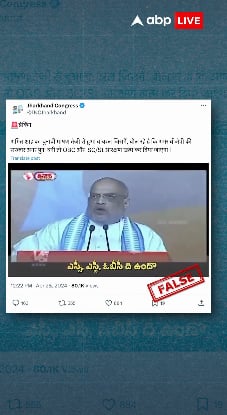
Lymphatic Filariasis: A Hidden Disease With Burdens Beyond The Physical Symptoms
India has set a target to eliminate lymphatic filariasis by 2027. Health ministry has adopted a 5-pronged strategy to protect future generations but inequality in the disease burden remains a concern.

By Dr. Ajay Khera
On a sultry July afternoon, Sulekha Devi (30) wiped her forehead as she sat hunched over a pile of utensils. Moving around is not an easy task for her, due to the swollen and deformed leg that lymphatic filariasis (LF) has left her with. The washing area is like any other in her village of Ekara in Bihar, surrounded by stagnant water and mosquitoes — primary carriers of her unsightly, disabling disease. Married at 12 and now a mother of four, Sulekha’s life is a daily struggle. "I wanted to earn for them, wanted to literally fly, but I can hardly walk now."
Sulekha's in not a one-off case. Her story is a microcosm of a larger, often invisible crisis. LF, commonly known as elephantiasis, is a neglected tropical disease that affects millions. It's a disease that doesn't just attack the body but erodes dreams, aspirations, and the very fabric of life.
LF's insidious nature lies in its ability to remain invisible for years until advanced symptoms develop. Early symptoms of frequent bouts of fever and chills are often brushed aside as a weak constitution. This is especially true in areas of high transmission where individuals often acquire the infection in childhood itself.
Yet, children remain under-represented in epidemiologic studies. For instance, there is very little information accessible in the public domain about the number of children affected by this disease, though the estimated global figure was 250 million, as reflected in a study from 2002. This masks the true extent of the problem, leading to under-appreciation of LF’s true impact on the adult and pediatric populations.
Advancements in diagnostic techniques, such as filaria-specific antigen assays, have shed light on the significant public health challenge posed by LF in children, demanding a critical re-evaluation of the disease’s nature and extent. The threat also extends to children in vitro through pregnant women, with studies indicating that filarial infection during pregnancy can have serious implications on a child's immune response and susceptibility to infection. The marked difference in the immune response of children born to infected mothers versus those born to uninfected mothers highlights the profound effect on life from the very beginning.
In India — a high-burden, endemic region — wherenearly 30% of the population is aged between 15 and 30 years, the concern around LF spreading undetected in the younger population should not be overlooked. LF is currently endemic in 339 districts across 20 states and union territories, and about 90% of this burden is contributed by 8 states — Uttar Pradesh, Bihar, Jharkhand, West Bengal, Chhattisgarh, Maharashtra, Odisha and Madhya Pradesh.
Recognising the gravity of this challenge, the Government of India has prioritised LF elimination, setting an ambitious target to eliminate it by 2027. The Ministry of Health and Family Welfare has adopted a five-pronged strategy focusing on mass-drug administration (MDA) campaigns, early diagnosis and treatment, and vector control measures, reflecting a commitment to protecting future generations.
Inequality A Concern
The pain in Sulekha's leg is a constant reminder of a deeper issue: inequality in the disease burden.
According to the World Health Organization, LF threatens over 882 million people in 44 countries, including India which accounts for 40% of the global disease burden. Here, LF is predominantly seen in rural areas and poor urban neighborhoods with women being more susceptible to acquiring this infection thanks to their work conditions involving cooking, cleaning, and standing in long queues for drinking water replete with the filarial mosquito’s breeding ground — stagnant dirty water.
In women, LF manifestation presents a complex interplay of social, economic, physical, and psychological challenges. Since LF is often acquired in childhood, its symptomatic onset can coincide with a woman’s youth and child-bearing years. Long bouts of fever accompanied by lymphatic swelling, progressive edema of the external genitalia (vulva), breasts, and/or arms and legs, thick, scaly skin of “warty” appearance lead to loss of livelihood, increased direct and indirect disease burden, social stigma and extreme seclusion.
Physical deformities and thickened skin present significant challenges for women not only during menstruation and childbirth but even in daily life as it affects hygiene, increases susceptibility to dermal infections, leads to incontinence and even infertility. It also cripples women mentally with almost 97% of respondents in a qualitative study of the perceptions, practices and socio–psychological suffering related to chronic brugian filariasis in Kerala reporting depression and feelings of inferiority.
The multifaceted and hidden nature of the filarial problem in women and children underscores the need for attention, large-scale research and a comprehensive approach that recognises the challenges faced by these demographics.
How To Fight The Disease
The advancements in diagnostic techniques are heralding a profound shift in the treatment approaches. Early diagnosis is helping MDA emerge as more than just a means to interrupt transmission. It is found to reverse sub-clinical lymphatic damage in children and provides benefits beyond interruption of spread, including increased appetite, weight gain, improved learning ability, and better school attendance. Yet, there is a need to expand the scale of research to fully understand the effects of MDA on children aiming to reach those in the most vulnerable circumstances.
Building on the momentum of innovative diagnostic and treatment solutions, it is vital to embrace a holistic approach to patient care so we can transcend beyond merely treating physical symptoms and also start treating the associated mental and social burdens of LF.
A global example of holistic patient care can be found in the EnDPoINT project, a pilot initiative conducted in Ethiopia. This project integrates medical treatment with mental health and psycho-social support through community engagement, awareness raising, stigma reduction, case finding, assessment, diagnosis, treatment services, and patient counseling, thus presenting a pathway toward more humane and effective care.
In the context of India's battle against LF, Anganwadi and ASHA workers have emerged as more than mere implementers of health strategies; they are the cornerstones of the Community Health System. Deeply rooted within communities, especially in women’s network, they are the indispensable links between the medico-psycho-social needs of those they serve and mass intervention programs. They understand the fabric of the community, the values, beliefs, and overall relationship dynamics, making them uniquely positioned to create awareness, foster treatment acceptance considering initial side effects, drive prevention and social re-integration of persons suffering from LF. The role of Anganwadi and ASHA workers is not restricted to furthering treatment. It extends to weaving a compassionate and responsive community health network that serve as the base for strengthening India's healthcare landscape.
Additionally, there is an acute need to create awareness campaigns around self-care measures to counter the psychological impact of LF. For example, innovative programmes targeting LF in southern Nepal have shown that fostering good self-care practices, such as hygiene and wound management, has proven to be effective in preventing and managing morbidity. It also reduces stigma, enhances self-respect and empowerment. Such findings emphasise the importance of helping patients develop a personal attitude and motivation for self-care. It also shows the importance of international collaboration in enriching our approach towardcombating LF.
By embracing the elements of community involvement, innovative medical technologies, and global partnerships we can build a resilient and compassionate holistic treatment approach, opening doors to a future where those affected are not just treated but empowered, allowing dreams to flourish free from the weight of the disease.
The author is a Country Representative at EngenderHealth in New Delhi.
[Disclaimer: The opinions, beliefs, and views expressed by the various authors and forum participants on this website are personal and do not reflect the opinions, beliefs, and views of ABP News Network Pvt Ltd.]
Check out below Health Tools-
Calculate Your Body Mass Index ( BMI )
Top Headlines
Trending News

and tablets




































